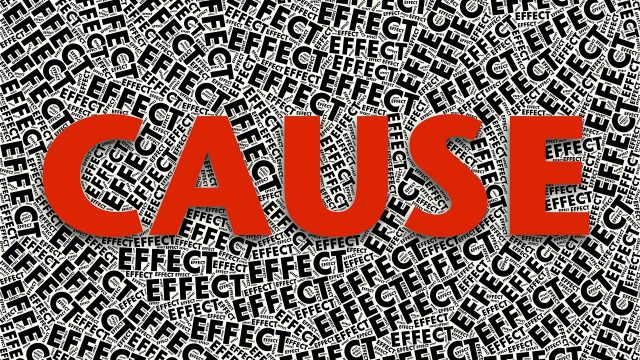by Julius DeSilva
In the world of process improvement and problem-solving, human “user” error can often become the go-to explanation when things go wrong. A mis-entered data point, a forgotten step in a procedure, or a misconfigured setting—blaming the user is quick and easy. But how do you know when an issue is bigger than just user error?
Understanding when to dig deeper and identify systemic flaws is critical. By integrating structured approaches like Root Cause Analysis (RCA) and the PDCA (Plan-Do-Check-Act) cycle, organizations can shift from a reactive blame culture to a proactive, continual improvement mindset that eliminates recurring problems at their source.
The Prevalence of User Error in Different Industries
Human error has been identified as a significant contributor to operational failures across multiple sectors:
- Cybersecurity: According to the World Economic Forum, 95% of cybersecurity breaches result from human error.
- Manufacturing: A study by Vanson Bourne found that 23% of unplanned downtime in manufacturing is due to human error, making it a key contributor to production inefficiencies. The American Society for Quality (ASQ) reports that 33% of quality-related problems in manufacturing are due to human error.
- Healthcare: The British Medical Journal (BMJ) estimates that medical errors—many due to human factors—cause approximately 250,000 deaths per year in the U.S. alone.
- Aviation & Transportation: The Federal Aviation Administration (FAA) attributes 70-80% of aircraft incidents to human error, but deeper analysis often reveals process design issues, poor training, or missing safeguards.
These statistics reinforce a key point: Human error isn’t always the root cause—it’s often a symptom of a deeper, systemic issue.
Recognizing When to Look Beyond User Error
Here’s how to tell when an issue isn’t just a one-time mistake but a signal that the system itself needs improvement:
- Recurring Issues Across Multiple Users – If multiple employees are making the same mistake, the problem likely isn’t individual human error—it’s a flaw in the process, system design, or training. For example, if multiple operators incorrectly configure a machine setting, it might indicate confusing controls, inadequate training, or unclear documentation rather than simple user mistakes.
- Workarounds and Process Deviations – If employees consistently find alternative ways to complete a task, the system may not be designed for real-world conditions. If workers routinely bypass a safety feature because it “slows them down,” the process needs reevaluation; either through retraining, redesign, or better automation. At QMII, we always reinforce building a system for the users, built on the as-is of how work is done and then making incremental improvements.
- High Error Rates Despite Training – If errors persist even after proper training, the issue might be process complexity, unclear instructions, or a lack of intuitive system design. If employees consistently make minor mistakes, the system interface or workflow rules might need simplification rather than just retraining staff.
- Error Spikes in High-Stress Situations – Mistakes often increase under time pressure, fatigue, or stress. This suggests a workload or process issue rather than simple carelessness. In a maritime environment, high error rates during critical operations could signal staffing shortages, inefficient safety interlocks, or poor user interfaces on devices.
Instead of just fixing errors after they happen, organizations should use the PDCA (Plan-Do-Check-Act) cycle to continually improve processes and reduce the probability of recurring failures.
The PLAN-DO-CHECK-ACT Approach
PLAN – Identify the context and potential risks
- Identify the context of the process including the competence of personnel, user environment, complexity and influencing factors.
- Apply Failure Mode and Effects Analysis (FMEA) to predict where failures are likely to happen before they occur.
- Identify and involve representatives of users through the development of FMEAs and the process.
- When predicting controls and resources, determine the feasibility of implementing and providing them.
- Simplify procedures, redesign workflows, or introduce automation to eliminate failure points.
DO – Implement the Process and Improvements
- Implement the process and test it to check its effectiveness. In the initial stages more frequent monitoring and measurement will be required. The periodicity between checks can be reduced as the process matures.
- Provide user training and assess its effectiveness. When errors occur retrain personnel, but only if training is truly the issue—don’t use training as a Band-Aid for bad system design.
- Look beyond documented “standard-operating” procedures. As an example: The company implements a visual step-by-step guide near machines to ensure operators follow a standard calibration process.
CHECK – Evaluate the Results
- Track performance data to see if the changes have reduced errors.
- Get user feedback to ensure the new system is intuitive and efficient. For example, Error rates drop by 40%, but operators still struggle with a specific step—prompting another refinement.
ACT – Standardize & Scale
- If the improvement is successful, integrate it as the new standard process.
- Scale the change across other departments or sites where similar issues might exist. For example, the company implements the same calibration guide and training approach across all locations, preventing similar errors company-wide.
Conclusion: From Blame to Solutions
While human error is a reality, it’s often a symptom of a deeper process flaw, not the root cause. Those involved in conducting a root cause analysis process or investigation process, must ask “How did the system fail the individual” and “Why did the system fail the individual”. By shifting from a blame mindset to a continual improvement approach, organizations can:
- Reduce costly errors and downtime
- Improve employee engagement (less frustration = higher productivity)
- Enhance conformity and compliance
- Increase process reliability and efficiency
Monitoring the system will continue for as the context changes the controls implemented may not be as effective as before. A proactive system will not guarantee that things never go wrong. When they do, however, the key is to dig deeper. Using tools like PDCA, FMEA, and RCA will help in identifying long-term solutions to recurring problems. Because in most cases, fixing the system is better than blaming the human.








